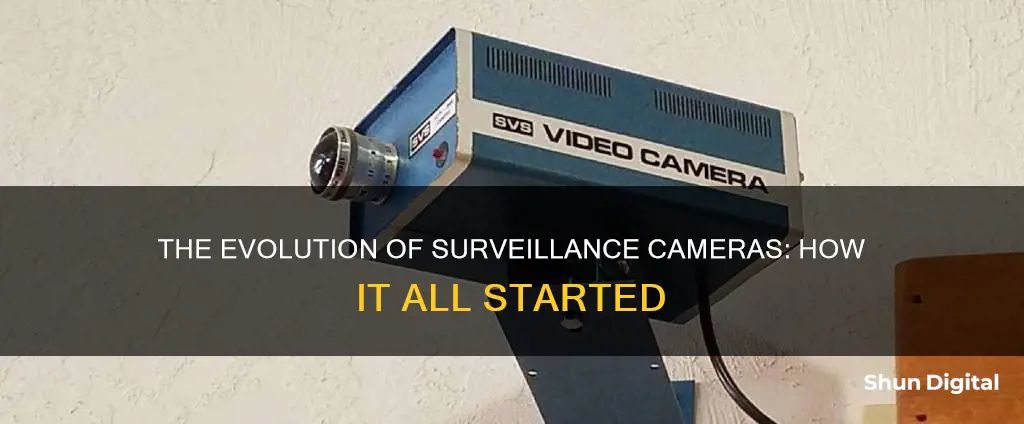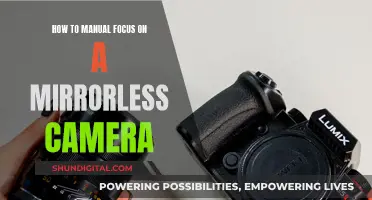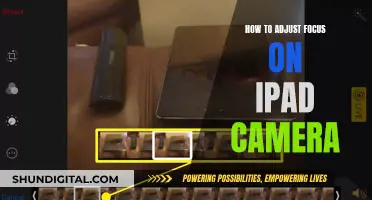
The history of surveillance cameras can be traced back to the early 20th century, with the development of the first closed-circuit television (CCTV) systems. One of the earliest recorded applications of CCTV was in 1942, when it was used to monitor rocket launches in Nazi Germany. However, the origins of surveillance cameras can be traced back even further, to the 1920s when Soviet inventor Léon Theremin developed a mechanical form of CCTV. While Theremin's invention was never put to use, it laid the groundwork for the development of CCTV technology.
In the following decades, surveillance cameras evolved from their military and industrial origins to become a common feature in public and private spaces. The commercial availability of CCTV systems began in the late 1940s, with the first systems being marketed for use in businesses and government entities. Over time, technological advancements such as the introduction of VCRs in the 1970s and the development of IP cameras in the 1990s made surveillance cameras more accessible and widespread.
Today, surveillance cameras are ubiquitous, with millions of cameras installed worldwide. The popularity of surveillance cameras is driven by the desire for increased security and the push for greater technology integration in homes and businesses. However, the widespread use of surveillance cameras has also raised concerns about privacy and civil liberties.
| Characteristics | Values |
|---|---|
| First use of surveillance cameras | 1926, by Soviet inventor Léon Theremin |
| First use of surveillance cameras for military purposes | 1927, in the Moscow Kremlin |
| First use of CCTV | 1942, in Nazi Germany |
| First commercial CCTV system | 1949, in the US |
| First home security system | 1966, by Marie Van Brittan Brown |
| First IP camera | 1996, by Axis Communications |
What You'll Learn

The first surveillance cameras were developed in the 1920s and 1930s for television production
The early camera systems were primarily used for real-time viewing due to the lack of reliable video recording systems. The introduction of videocassette recorders (VCRs) in the 1970s revolutionised the use of video surveillance, making it more accessible and cost-effective. This technology was soon utilised for security purposes, with the first commercial closed-circuit television system becoming available in the US in 1949.
The development of closed-circuit systems, which allowed the signal from cameras to be broadcast to a limited number of monitors, marked the beginning of CCTV (closed-circuit television) systems. This technology evolved into a tool for security and surveillance rather than entertainment.
The first CCTV system was developed in 1927 by Russian physicist Léon Theremin, who is also known for inventing the theremin, a musical instrument. This mechanical CCTV system was demonstrated to Joseph Stalin and was later installed in the Moscow Kremlin to monitor approaching visitors. However, Theremin's invention was classified by the army and never put to use.
Understanding Panoramic Photography: Pano Mode in Cameras
You may want to see also

The first video surveillance system was used by the Nazis in 1942
The first video surveillance system, or closed-circuit television (CCTV), was used in Nazi Germany in 1942. The technology was developed by German engineer Walter Bruch to allow scientists and military personnel to observe the launch of V-2 rockets from a safe distance. The system was also used to track the trajectory of the rockets, helping German scientists improve the accuracy of their weapons.
The earliest CCTV setup was created by Russian inventor Leon Theremin in 1927 to monitor visitors at the Kremlin in Moscow. However, neither Theremin's invention nor Bruch's initial system could record footage, requiring constant real-time monitoring. The development of reel-to-reel media and the emergence of VCR technology in the 1970s revolutionized video surveillance by enabling the recording and storage of surveillance footage.
Following its inception in Nazi Germany, CCTV technology spread to the United States, where it was used by the government and commercial entities. By the 1960s, CCTV systems were being used in London to monitor crowds during the Thai royal family's visit, and police surveillance in the city increased significantly in subsequent years. The private sector also began adopting CCTV systems in the 1970s, with banks leading the way, followed by other retail spaces.
The proliferation of CCTV accelerated with advancements in digital technology, including the introduction of IP cameras and artificial intelligence (AI) integration. Video surveillance systems became increasingly common in banks, stores, and other businesses vulnerable to theft. Today, surveillance cameras are prevalent in public spaces, with advancements in digital technology enabling widespread deployment for security and monitoring purposes.
Mastering Bokeh: Understanding Camera's Bokeh Mode
You may want to see also

By 1949, commercial CCTV was available in the US
The history of surveillance cameras can be traced back to the early 20th century, with the first recorded application of closed-circuit television (CCTV) occurring in 1942. By 1949, commercial CCTV was available in the US, marking a significant milestone in the evolution of surveillance technology.
The development of CCTV technology began earlier, with initial attempts at creating a mechanical form of CCTV dating back to 1926 by Soviet inventor Léon Theremin. However, it was German engineer Walter Bruch who invented the first functional CCTV system in 1942, which was used by the Nazis to observe V-2 rocket launches. This caught the attention of the US government, which began using CCTV to monitor nuclear bomb tests, providing scientists with a safe way to observe the effects of nuclear weapons without being in harm's way.
Recognizing the potential of this technology, American contractors began exploring the commercial viability of CCTV. By 1949, a US contractor called Vericon, designed by CBS Laboratories, started selling this technology for commercial use. This marked the beginning of widespread adoption of CCTV in the US, with both government entities and commercial users utilizing it to enhance security and surveillance.
The introduction of CCTV in the US faced several challenges in its early years. One of the main limitations was the lack of recording capabilities, requiring constant human monitoring. This issue was eventually addressed in the 1950s with the introduction of reel-to-reel tape solutions, although these were cumbersome and unreliable. It wasn't until the 1970s with the advent of videocassette recorders (VCRs) that recording and erasing information became more accessible and cost-effective, leading to a wider adoption of CCTV systems.
The evolution of CCTV technology continued with the introduction of network-attached IP cameras in 1996, marking a significant shift for the industry. These new cameras utilized Ethernet networks for communication, transmitting digital signals instead of analog ones. The improved convenience and functionality of IP cameras contributed to their growing popularity, outselling analog cameras by 2014.
Today, surveillance cameras are an integral part of our lives, with over 30 million surveillance cameras in the United States alone. The technology has advanced significantly since its inception, with high-performance cameras offering ultra-high resolutions, improved low-light capabilities, and long-range lenses. The rise of smartphone technology and IoT innovations have further broadened access to security cameras, making them more accessible and user-friendly.
Close Focus Photography: Capturing Tiny Details with Cameras
You may want to see also

The first home security system was patented in 1969
The history of surveillance cameras can be traced back to the 1920s and 1930s, when the first video camera systems were developed for television production. However, it was not until the 1940s that these cameras were used for security and surveillance purposes. The first video surveillance system was installed in Nazi Germany in 1942 to observe the launch of long-range guided ballistic missiles. Soon after, closed-circuit television (CCTV) systems became available in the United States for both government and commercial use.
One notable pioneer in the development of surveillance technology is Marie Van Brittan Brown, an African American nurse from Jamaica, Queens, New York. Born in 1922, Brown worked long hours and often returned home alone at night. Concerned about her safety in a high-crime neighbourhood and slow police response times, she set out to create a security system that would allow her to see who was at her door. In 1966, Brown, along with her husband, an electronics technician, invented a security system consisting of four peepholes, a sliding camera, television monitors, and two-way microphones. This system, known as CCTV, enabled Brown to communicate with visitors and see them from different heights. It also included a remote to unlock the door and an emergency button to alert authorities.
On August 1, 1966, Brown and her husband filed for a patent for their invention, receiving it in 1969 under U.S. Patent number 3,482,037. The New York Times recognised the effectiveness and ingenuity of their invention, and Brown was credited in at least 32 subsequent patent applications. Her legacy continues today, as her CCTV system is still widely used in places such as banks, office buildings, and apartment complexes.
GoPro Cameras: Unveiling the Materials Behind the Adventure
You may want to see also

The first IP camera was invented in 1996
The history of surveillance cameras can be traced back to the 1940s, with the earliest known uses of closed-circuit television (CCTV) technology. However, the first IP camera, a significant milestone in the evolution of surveillance technology, was invented in 1996.
The first IP camera was introduced by Axis Communications in 1996. This innovation marked a shift from analogue closed-circuit television (CCTV) systems to digital video surveillance. IP cameras utilise the internet protocol (IP) to transmit video signals as digital encoded signals over a local area network, rather than through analogue methods such as coax cable. This advancement offered several advantages, including the ability to send and receive data remotely without the need for a local recording device.
The first centralised IP camera, the AXIS Neteye 200, was released by Axis Communications in the same year. While the camera was advertised as accessible from anywhere with an internet connection, it was limited to returning a single image for each request. This was due to the lack of powerful integrated circuits capable of handling real-time video streaming at the time. As a result, the AXIS Neteye 200 found its primary application in the tourism industry rather than as a replacement for traditional CCTV systems.
The introduction of IP cameras in 1996 marked a significant advancement in surveillance technology, paving the way for the widespread adoption of digital video surveillance. However, it took time for the new technology to gain traction, with computer dealers, who understood the potential of IP cameras, playing a crucial role in their increasing popularity.
The impact of IP cameras on the surveillance industry was profound. By 2009, just over a decade after their introduction, IP cameras had already surpassed the performance of analogue CCTV cameras in every way. The resolution of IP cameras improved rapidly, with the introduction of megapixel IP cameras in 2002, offering four times the resolution of older VGA cameras. This was followed by the release of 2-megapixel cameras in 2004, which marked a massive leap forward for the industry.
The evolution of IP cameras continued with advancements in cloud infrastructure, leading to the release of the first IP camera doorbell for home use in 2014 by Ring, owned by Amazon. The convenience and accessibility of IP cameras, along with improvements in resolution and performance, have contributed to their widespread adoption. By 2018, the market size of home security systems reached $4.8 billion, with a compound annual growth rate of 22.4% between 2011 and 2018.
Soft-Focus Camera Conundrum: Hyphenating Photography Terms
You may want to see also
Frequently asked questions
The first surveillance camera system was invented by León Theremin in 1926. However, the first documented use of surveillance cameras was in 1942 when the German military used them to observe rocket launches.
The first commercial surveillance cameras became available in the US in 1949.
The first home security system was patented in 1969 by Marie Van Brittan Brown. However, the infrastructure for home security systems wasn't up to par until 1996 when the first IP camera was invented.
Surveillance cameras became more common in business places in the late 1970s. Today, there are over 100 million surveillance cameras worldwide.







